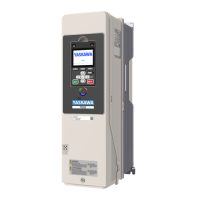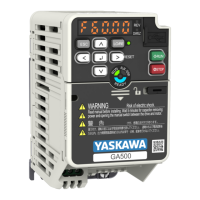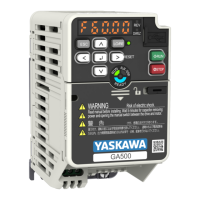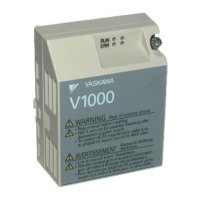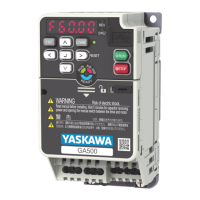Diagnostics & Troubleshooting 6 - 30
Table 6.6 Main Circuit Test Procedure (continued)
Check Procedure
Output Transistors
(Q1-Q12)
The output transistors are used to switch the DC bus voltage to allow current to flow to the motor.
The following checks will read erroneously if the DC bus fuse is open.
1. Set a digital multi-meter to the Diode Check setting.
2. Place the positive (red) meter lead on terminal U/T1.
Place the negative (black) meter lead on terminal ⊕ 1.
Expected reading is about 0.5Vdc.
3. Place the positive (red) meter lead on terminal V/T2.
Place the negative (black) meter lead on terminal ⊕ 1.
Expected reading is about 0.5Vdc.
4. Place the positive (red) meter lead on terminal W/T3.
Place the negative (black) meter lead on terminal ⊕ 1.
Expected reading is about 0.5Vdc.
5. Place the positive (red) meter lead on terminal U/T1.
Place the negative (black) meter lead on terminal (-).
Expected reading is OL displayed.
6. Place the positive (red) meter lead on terminal V/T2.
Place the negative (black) meter lead on terminal (-).
Expected reading is OL displayed.
7. Place the positive (red) meter lead on terminal W/T3.
Place the negative (black) meter lead on terminal (-).
Expected reading is OL displayed.
8. Place the positive (red) meter lead on terminal (-).
Place the negative (black) meter lead on terminal U/T1.
Expected reading is about 0.5Vdc.
9. Place the positive (red) meter lead on terminal (-).
Place the negative (black) meter lead on terminal V/T2.
Expected reading is about 0.5Vdc.
10. Place the positive (red) meter lead on terminal (-).
Place the negative (black) meter lead on terminal W/T3.
Expected reading is about 0.5Vdc.
11. Place the positive (red) meter lead on terminal ⊕ 1.
Place the negative (black) meter lead on terminal U/T1.
Expected reading is OL displayed.
12. Place the positive (red) meter lead on terminal ⊕ 1.
Place the negative (black) meter lead on terminal V/T2.
Expected reading is OL displayed.
13. Place the positive (red) meter lead on terminal ⊕1.
Place the negative (black) meter lead on terminal W/T3.
Expected reading is OL displayed.
Control Power Fuse
All Drives have a Control Power Fuse. The fuse is located on either the Power PCB (3PCB) or the
Gate Drive PCB (3PCB). The Control Power Fuse protects the primary switching mode power
supply.
1. Set a digital multi-meter to the R x 1 scale.
2. Place one lead of the multi-meter on one side of the fuse and place the other lead of the multi-
meter on the other side of the fuse.
3. If the fuse is good, the measured value will be 0
Ω.
If the fuse is bad, the measured value will be infinite
Ω.
Email: Sales@aotewell.com
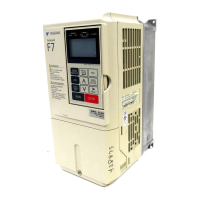
